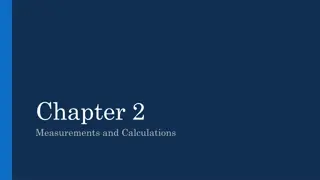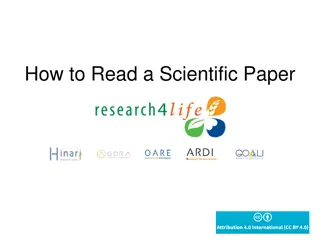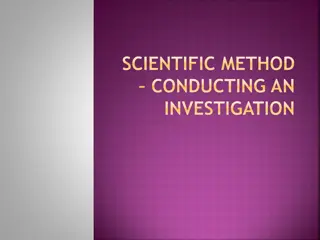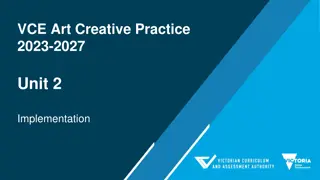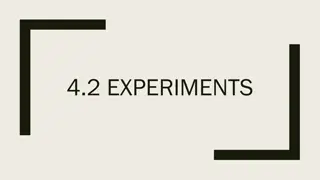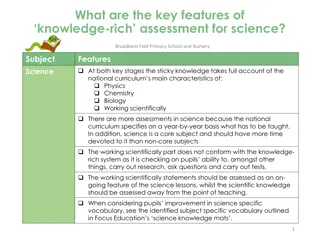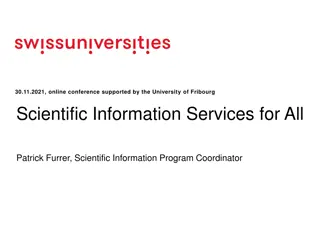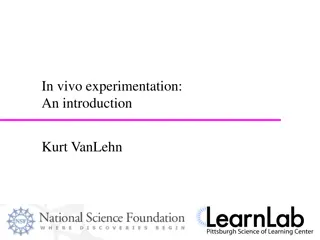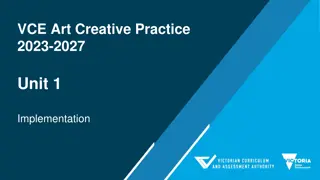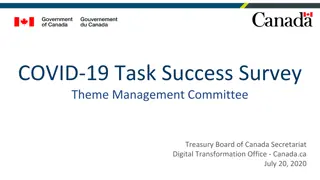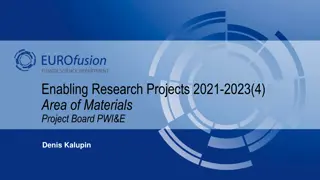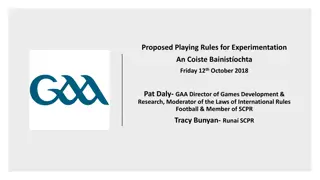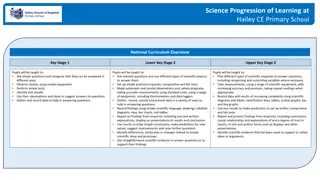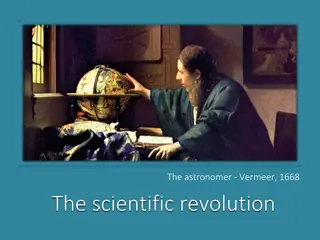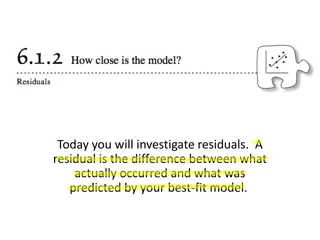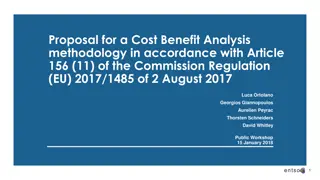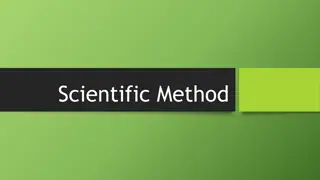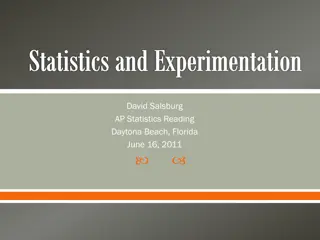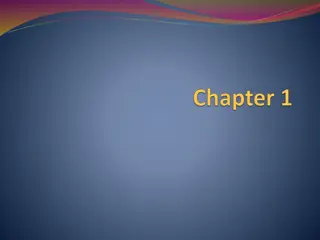Scientific Experimentation and Methodology
Scientific experimentation involves precise procedures such as making observations, forming hypotheses, designing experiments, and analyzing data to draw valid conclusions. The scientific method guides the process, ensuring credibility in scientific investigations. This content illustrates essential steps and practices in experimental design, covering topics like observation, hypothesis formulation, and the importance of accurate predictions. Engage in hands-on activities like observation tasks and hypothesis practices to enhance your understanding of scientific inquiry.
Download Presentation

Please find below an Image/Link to download the presentation.
The content on the website is provided AS IS for your information and personal use only. It may not be sold, licensed, or shared on other websites without obtaining consent from the author.If you encounter any issues during the download, it is possible that the publisher has removed the file from their server.
You are allowed to download the files provided on this website for personal or commercial use, subject to the condition that they are used lawfully. All files are the property of their respective owners.
The content on the website is provided AS IS for your information and personal use only. It may not be sold, licensed, or shared on other websites without obtaining consent from the author.
E N D
Presentation Transcript
Bell Ringer List three procedures discussed the first day of school.
Experimental Design ESSENTIAL QUESTION: HOW DO SCIENTISTS PROPERLY DESIGN AND CARRY OUT AN EXPERIMENT?
Scientific Method Scientific experimentation is carried out with the scientific method in order to able to confidently draw conclusions. Steps of the Scientific Method Make an observation and pose a question Form a hypothesis-easily written as an if-then statement. Make a prediction (can be included in hypothesis) Design an experiment 5. Analyze Data/ Draw a conclusion 1. 2. 3. 4.
Observation-the act of perceiving using the senses Let s see how observant you are. The next slide will be shown to you for 30 seconds. Record as many observations as you can about the slide. Ready?
Observation Questions What color is the car that is off the carrousel? red How many portable toilets are there in the picture? 3 What appears on each door of the portable toilet? Crescent moon What animal escaped the zoo? lion What are the seals eating? fish How many bowling pins are knocked down? 2
Hypothesis- a proposed explanation for the way a particular aspect of the natural world functions. The hypothesis can easily be written as an if-then statement, though it is not the only way to write one. For example: If I increase my time studying then I will get better grades.
Hypothesis Practice While holding a flashlight you noticed the size of the illuminated (lighted) area was changing as you were walk. Write a hypothesis using an if-then statement proposing what factor is causing the size of the illuminated area to change.
Prediction- a statement that forecasts what would happen if the hypothesis were true. A prediction is record for each hypothesis. Can be embedded in the hypothesis Experiment- Used to test the hypothesis by gathering reliable data. Many experiments are called controlled experiments. They have Control Group- the normal group or a group that provides a standard for comparison. Experimental Group-same as the control group except one factor is changed (Independent variable)
Variables Independent Variable-The manipulated variable. It is the variable that the experimenter is adding to the experimental group to see how it compares to the control group. An easy way to remember it is that the independent variable Changed! Dependent Variable- the responding variable or what is being measured or counted
Type of Data to Collect Quantitative Data- measurable using instruments. Example: The illuminated area is 10cm when the flashlight is 8cm away from the chalk board. Qualitative Data-gathered through your senses (sight, smell, hear, touch, taste) When the illuminated area got big students notice it was more dim.
Cautions in Science Inferences- make a conclusion on the basis of facts and previous knowledge rather than direct observation. Waldo Picture- Some of you may have made inferences about what animal escaped the zoo. Bias-making a judgment based on prior knowledge.
Theory After a lot of experimentation .. A scientific theory is a well-substantiated explanation of some aspect of the natural world that is acquired through the scientific method and repeatedly tested and confirmed, preferably using a written, pre-defined, protocol of observations and experiments.
Closing Tell me one or more things you learned from this presentation.




